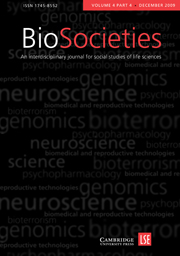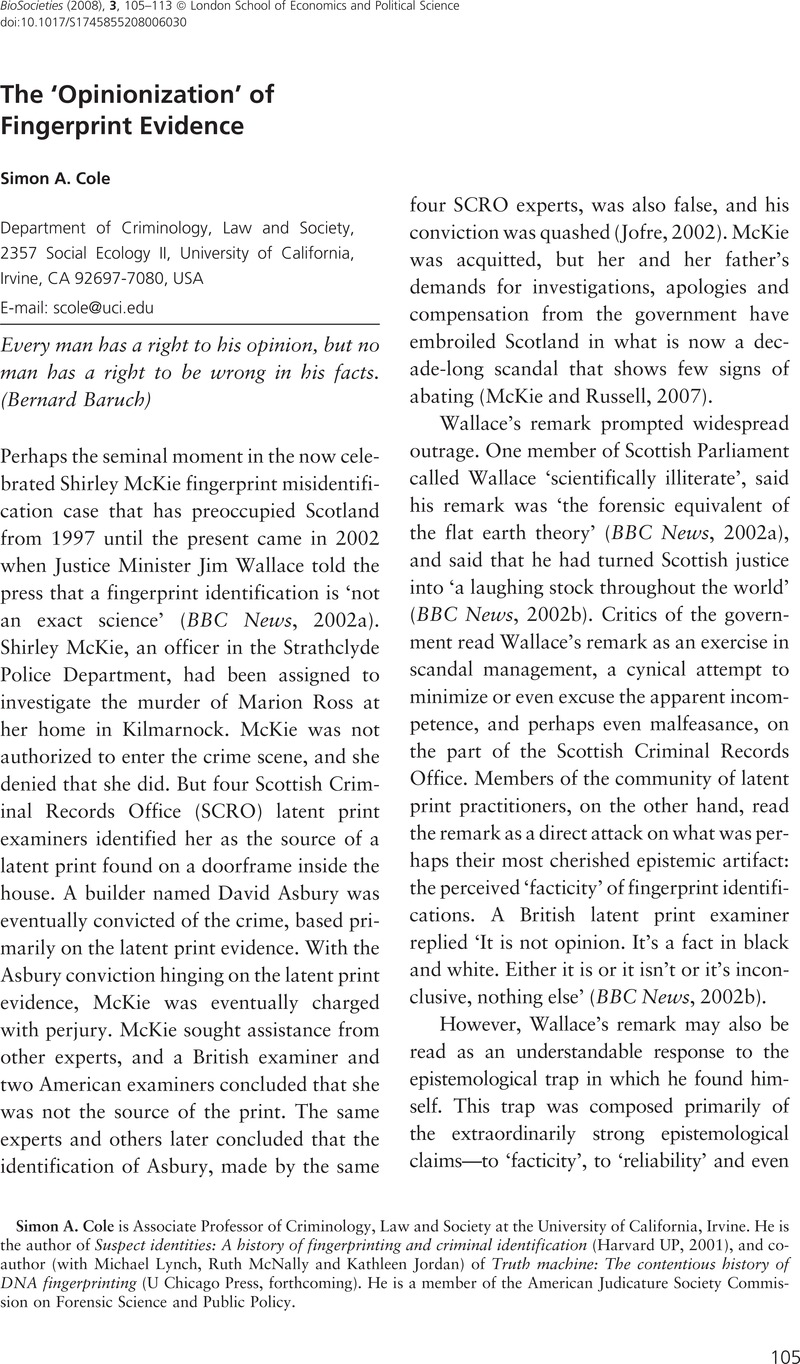Crossref Citations
This article has been cited by the following publications. This list is generated based on data provided by Crossref.
Champod, Christophe
2009.
Wiley Encyclopedia of Forensic Science.
Cole, Simon A.
and
Lynch, Michael
2010.
Genetic Suspects.
p.
105.
Hall, Alexandra
and
Mendel, Jonathan
2012.
THREATPRINTS, THREADS AND TRIGGERS.
Journal of Cultural Economy,
Vol. 5,
Issue. 1,
p.
9.
Abraham, Joshua
Champod, Christophe
Lennard, Chris
and
Roux, Claude
2013.
Spatial analysis of corresponding fingerprint features from match and close non-match populations.
Forensic Science International,
Vol. 230,
Issue. 1-3,
p.
87.
Abraham, Joshua
Champod, Christophe
Lennard, Chris
and
Roux, Claude
2013.
Modern statistical models for forensic fingerprint examinations: A critical review.
Forensic Science International,
Vol. 232,
Issue. 1-3,
p.
131.
Champod, Christophe
2015.
Fingerprint identification: advances since the 2009 National Research Council report.
Philosophical Transactions of the Royal Society B: Biological Sciences,
Vol. 370,
Issue. 1674,
p.
20140259.
2016.
Fingerprints and Other Ridge Skin Impressions, Second Edition.
p.
33.
Lee, Rebecca
Comber, Bruce
Abraham, Joshua
Wagner, Michael
Lennard, Chris
Spindler, Xanthe
and
Roux, Claude
2017.
Supporting fingerprint identification assessments using a skin stretch model — A preliminary study.
Forensic Science International,
Vol. 272,
Issue. ,
p.
41.
Swofford, H.J.
Koertner, A.J.
Zemp, F.
Ausdemore, M.
Liu, A.
and
Salyards, M.J.
2018.
A method for the statistical interpretation of friction ridge skin impression evidence: Method development and validation.
Forensic Science International,
Vol. 287,
Issue. ,
p.
113.
Crossland, Zoë
2018.
Forensic Afterlives.
Signs and Society,
Vol. 6,
Issue. 3,
p.
622.
Gotham, Kevin Fox
and
Kennedy, Daniel Bruce
2019.
Practicing Forensic Criminology.
p.
1.
Aviram, Hadar
2019.
The Legal Process and the Promise of Justice.
p.
19.
Greenspan, Rosann
Aviram, Hadar
and
Simon, Jonathan
2019.
The Legal Process and the Promise of Justice.
2019.
Practicing Forensic Criminology.
p.
251.
Robson, Samuel G.
Searston, Rachel A.
Edmond, Gary
McCarthy, Duncan J.
and
Tangen, Jason M.
2020.
An expert–novice comparison of feature choice.
Applied Cognitive Psychology,
Vol. 34,
Issue. 5,
p.
984.
Swofford, H.
and
Champod, C.
2021.
Implementation of algorithms in pattern & impression evidence: A responsible and practical roadmap.
Forensic Science International: Synergy,
Vol. 3,
Issue. ,
p.
100142.
Marcon Zabecki, Jessica
Quigley‐McBride, Adele
and
Meissner, Christian A.
2022.
Information loss, contextual information, and distinctiveness influence how well novice analysts discriminate fingerprints.
Applied Cognitive Psychology,
Vol. 36,
Issue. 6,
p.
1325.
Stoney, David
and
Stoney, Paul
2024.
How the work being done on statistical fingerprint models provides the basis for a much broader and greater impact affecting many areas within the criminal justice system.
Law, Probability and Risk,
Vol. 23,
Issue. 1,
Penders, Bart
2024.
Scandal in scientific reform: the breaking and remaking of science.
Journal of Responsible Innovation,
Vol. 11,
Issue. 1,



